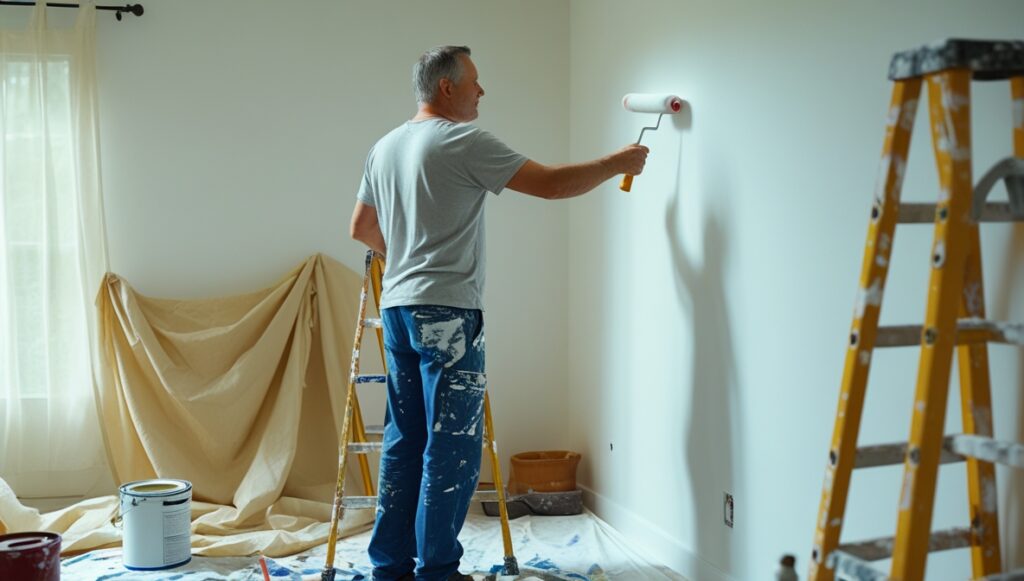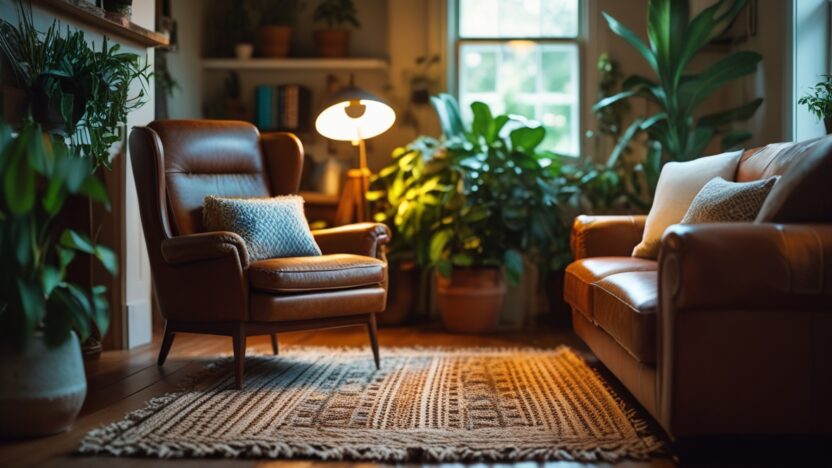Redecorating your home can breathe new life into your living space, making it more comfortable, stylish, and reflective of your personality. For men in their 50s and beyond, this process can be particularly rewarding, as it allows you to create an environment that suits your lifestyle and preferences. However, the idea of redecorating might seem daunting, especially if you’re working with a limited budget. The good news is that transforming your home doesn’t have to break the bank. With some creativity, planning, and resourcefulness, you can achieve stunning results without overspending. In this guide, we’ll walk you through practical tips, budget-friendly ideas, and step-by-step strategies to help you redecorate your home affordably.
Why Redecorate Now?
As we age, our needs and tastes evolve. What once felt cozy and functional may no longer align with how you want to live. Whether you’re downsizing, updating your space for retirement, or simply seeking a refresh, redecorating offers numerous benefits:
- Improved Comfort : A well-thought-out design can make your home more ergonomic and enjoyable.
- Increased Property Value : Even small changes can boost your home’s appeal if you ever decide to sell.
- Personal Expression : Your home should reflect who you are now, not who you were decades ago.
“Your home is your sanctuary. Redecorating it thoughtfully can enhance both your physical and emotional well-being.” – Interior Design Expert
Step 1: Assess Your Needs and Set Priorities
Before diving into any project, take time to evaluate what you truly need. Ask yourself:
- Which areas of my home require immediate attention?
- Do I need to update for functionality (e.g., better lighting, storage) or aesthetics (e.g., colors, furniture)?
- What is my overall goal? Am I aiming for a modern look, a cozy retreat, or something else entirely?
Once you’ve identified your priorities, categorize them based on urgency and cost. This will help you allocate your budget effectively.
| Room/Area | Priority Level | Estimated Cost | Key Changes Needed |
|---|---|---|---|
| Living Room | High | $200-$500 | New throw pillows, rug, paint |
| Bedroom | Medium | $100-$300 | Bedding upgrade, wall art |
| Kitchen | High | $300-$700 | Cabinet hardware, backsplash tiles |
| Bathroom | Low | $50-$200 | Shower curtain, towel set, mirror |
Step 2: Create a Realistic Budget
One of the biggest mistakes people make when redecorating is failing to establish a clear budget. Without one, costs can quickly spiral out of control. Here’s how to plan yours:
- Determine Your Total Spending Limit : Decide how much you’re willing to spend overall.
- Allocate Funds Wisely : Focus on high-impact areas first, such as the living room or kitchen.
- Include Contingency Funds : Set aside 10-15% of your total budget for unexpected expenses.
For example, if your total budget is $1,000, consider allocating:
- $400 for the living room
- $300 for the kitchen
- $200 for the bedroom
- $100 for miscellaneous items
This approach ensures you stay within your means while still achieving meaningful improvements.

Step 3: Declutter and Reorganize
Before spending money on new decor, declutter your space. Removing unnecessary items can instantly make your home feel larger and more inviting. Follow these steps:
- Sort Through Belongings : Donate or sell items you no longer use or love.
- Reorganize Storage Spaces : Invest in affordable organizers like bins or baskets to maximize space.
- Repurpose Existing Furniture : Sometimes, rearranging furniture or repainting it can give it a fresh lease on life.
Decluttering also helps you identify gaps in your current setup, allowing you to shop more intentionally.
Step 4: DIY Projects for Big Impact
DIY projects are a fantastic way to save money while adding a personal touch to your home. Here are some ideas tailored for men over 50:
Paint Walls or Furniture
A fresh coat of paint can dramatically transform a room. Choose neutral tones for a timeless look or bold colors for a statement piece.
Update Hardware
Replacing cabinet knobs, drawer pulls, and light switch plates is an inexpensive way to modernize your space.
Build Simple Shelves
If you’re handy, building floating shelves can add both storage and style to any room.
“DIY isn’t just about saving money—it’s about creating something uniquely yours.” – Home Improvement Guru
Step 5: Shop Smart for Decor
When purchasing new decor, prioritize quality over quantity. Look for deals, discounts, and second-hand treasures to stretch your budget further.
Thrift Stores and Flea Markets
These venues often carry unique, vintage pieces at a fraction of retail prices. Keep an eye out for solid wood furniture, which can be refinished easily.
Online Marketplaces
Websites like Facebook Marketplace, Craigslist, and eBay are great places to find gently used items. Always inspect goods before buying.
Clearance Sales
Retailers frequently offer deep discounts on overstocked or discontinued items. Visit stores during holiday sales for the best deals.
Here’s a quick comparison of shopping options:
| Option | Pros | Cons | Best For |
|---|---|---|---|
| Thrift Stores | Affordable, eco-friendly | Requires patience and effort | Unique finds, vintage lovers |
| Online Marketplaces | Wide selection, competitive pricing | Risk of scams or damaged goods | Tech-savvy shoppers |
| Retail Clearance | Brand-new items, guaranteed quality | Limited availability | Last-minute purchases |
Step 6: Focus on Small but Meaningful Updates
Sometimes, minor tweaks can yield significant results. Consider these low-cost yet impactful upgrades:
- Lighting : Swap outdated fixtures for sleek, energy-efficient alternatives.
- Rugs and Curtains : Add warmth and texture with new textiles.
- Wall Art : Hang framed photographs, posters, or even DIY creations to personalize your walls.

Step 7: Incorporate Nature Indoors
Bringing elements of nature into your home can enhance its ambiance and promote relaxation. Houseplants are an excellent choice because they purify the air and add vibrancy. If caring for plants feels overwhelming, opt for low-maintenance varieties like succulents or snake plants.
Step 8: Embrace Minimalism
Less is often more, especially when working with a tight budget. Adopting a minimalist aesthetic means focusing on essential pieces and avoiding clutter. This philosophy not only saves money but also creates a serene environment conducive to rest and reflection.
Common Mistakes to Avoid
While redecorating on a budget, steer clear of these common pitfalls:
- Overbuying Accessories : Resist the urge to fill every corner with knick-knacks; simplicity is key.
- Ignoring Functionality : Ensure every item serves a purpose beyond mere decoration.
- Neglecting Maintenance : Regular upkeep prevents costly repairs down the line.
Conclusion
Redecorating your home on a budget is entirely possible with careful planning and creative solutions. By assessing your needs, setting a realistic budget, decluttering, tackling DIY projects, and shopping smartly, you can achieve a refreshed and inviting space without overspending. Remember, the goal is to create a home that reflects your personality and supports your lifestyle—regardless of your budget.



